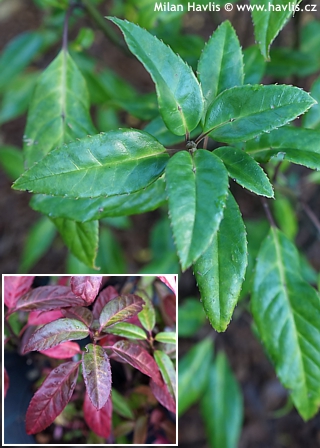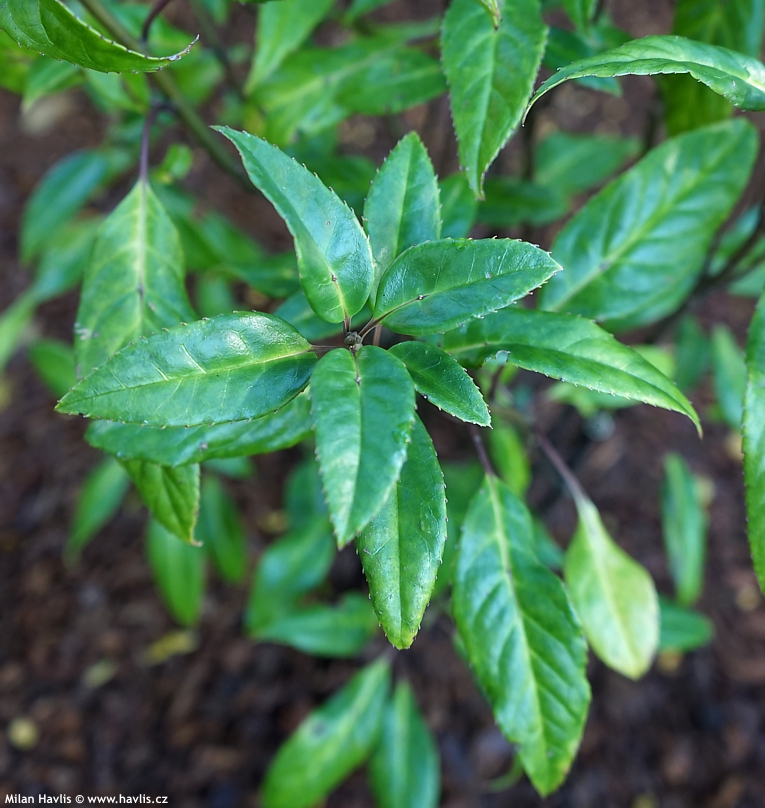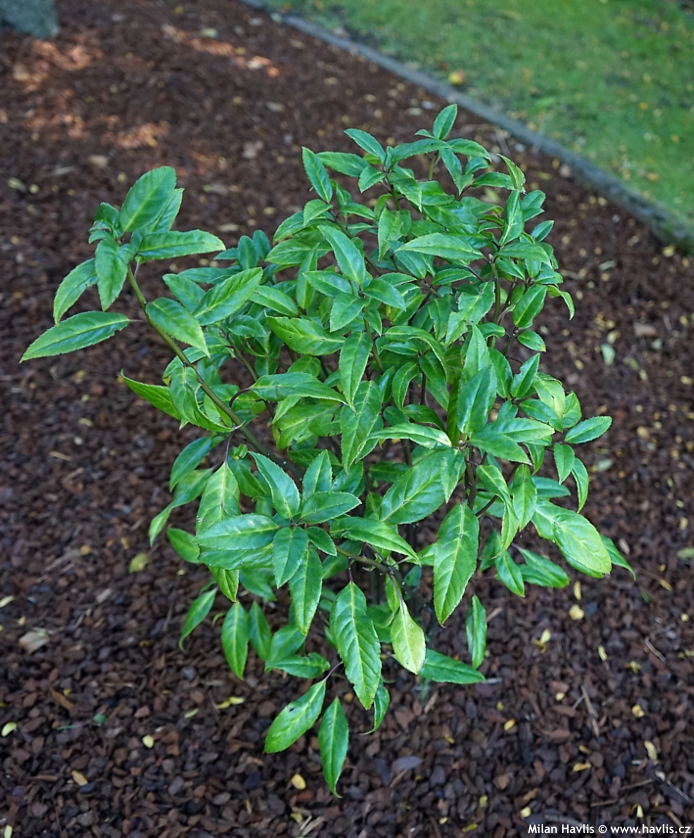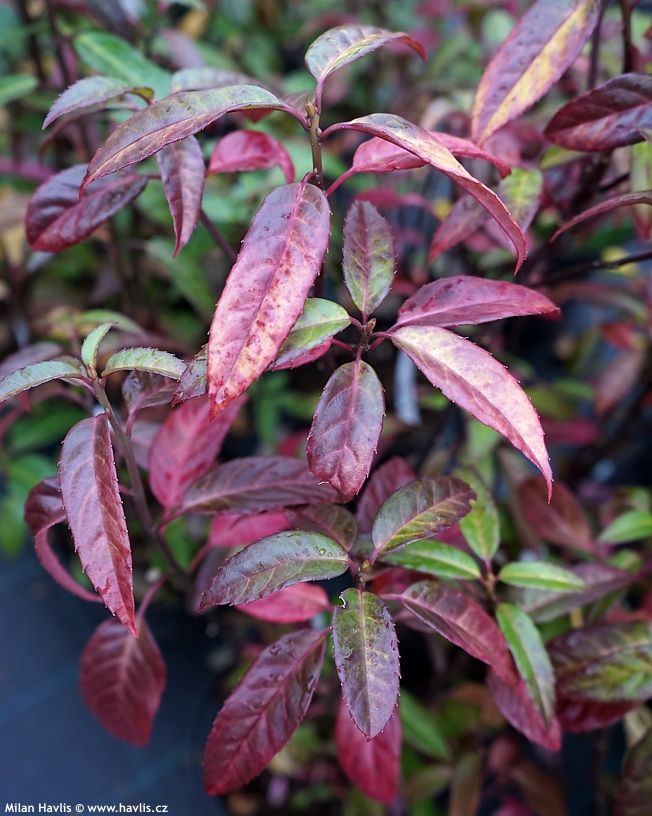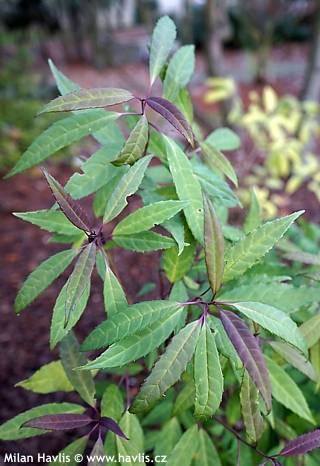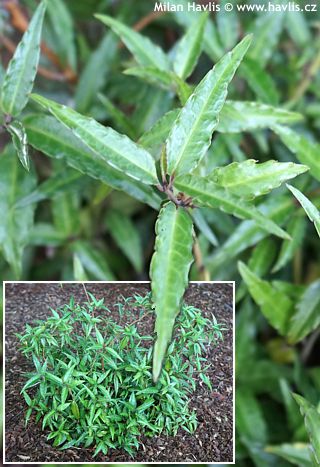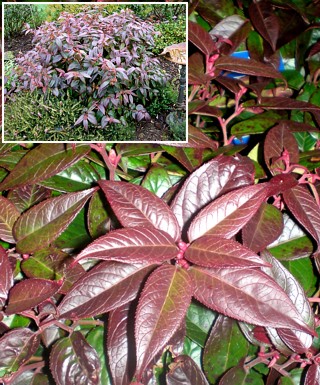Helwingia chinensis 'BROAD-LEAVED-FORM' Chinese helwingia
size/type
medium-sized shrub,medium-sized shrub
usual height
1-2m
usual width
1-1,5m
leaves
evergreen broadleaf
colour of leaves
flowers
less showy but noticeable
blooming time
June
location
semi-shade / partial sun
soil type
acidic (peaty) to neutral
soil moisture requirements
evenly moist (dislikes drought)
USDA zone (lowest)
7 (down to -23°C)
winter protection
for zone 5+6

for zone 7

categorized
Helwingia
Helwingia is an Asian taxon, formerly listed under cornaceae family but thanks to its unique characteristics a new family was created just for them in late 19th century – helwingiaceae. The plants form deciduous to evergreen shrubs whose main attraction are the small flowers on the midribs of the leaves. Helwingia is not generally known in Europe or America, it is mostly cultivated in specialty nurseries for plant collectors and botanical gardens as a rare plant. Being rare as well as very variable brings an expected result – mistakes in naming. In order to avoid that we rely on a rather comprehensive study put together by Japan botanists Hiroshi Hara and Sachiko Kurowasa, published in the Flora of Eastern Himalaya by the University of Tokyo in 1975.Description of the plant:
Broad-Leaved-Form is a simple name for a variety of Chinese helwingia found in 1990’s. It has larger and broader leaves as opposed to its narrow-leaved sister var. chinensis. They are evergreen, very glossy, shallowly serrated at margins, dark green in summer, and may or may not turn purple or marron in autumn if chlorophyl (green pigment) is shifted to its roots. It grows moderately to fast (20-40 cm per year), making strong, upright shoots, and its young twigs are maroon to brown-red. It does not spread by root runners like its narrow-leaved and forms a rather strong, multistemmed shrub. In June appear small flowers that are produced in the centre of the widest parts of the leaves. They are male and pollinate all other female helwingias but do not produce fruit themselves.
Chinese helwingia naturally grows as an understory plant, it prefers semi-shaded or shaded locations under tall trees, between larger shrubs, at the shady back of the border, or behind walls and houses with limited sunlight. It likes constantly moist but well-drained soil. We experienced the best results with acidic soil where its foliage produced the richest colour. It does not like drought so keep it mulched. We have not tested its hardiness under all conditions yet and rely on experience of other growers who rate it hardy to about -23 °C (USDA zone 6). Further trials are ongoing.
Last update 30-12-2020
QUICK PRICE OVERVIEW
CURRENTLY SOLD OUT
WANT TO TRY A SIMILAR PLANT?












